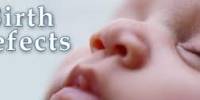Introduction
Nurses are one of the main care providers in the health care system. Nurses form the backbone of health care services representing over 50% of the health professionals Student nurses are the foundation of nursing services. But, they are facing their problem at academic, clinical and community level. So, every year a number of student nurses drop their study that develops shortage of future nurse in our country.
There are at present 2,213 public and private hospitals with a total capacity of 51,684 beds. There is only one bed for 2,665 people, one doctor for 3012 patients and one nurse for 6342 patients in the country according to government estimates. WHO launched the “Strategic Direction for Strengthening Nursing and Midwifery Services 2002-2008” (Resolution 54.12) targeting 5 main areas to scale up and enhance the development of nursing and midwifery services to respond to health needs on the basis of sound scientific and clinical evidence.[i]
Nursing Education is based on modern trends and developments in medical, health, social and educational sciences in order to keep pace with the changing needs of society and advanced
technology. The education process involves knowledge application, development of psycho-motors skills and subsequent change in attitude and behavior in the desired direction. The development of moral values (e.g. Responsibility, Honesty, Loyalty, etc.) is an important component of helping nursing students to become efficient nurses and good citizens. Helping nursing students to achieve their highest potential, both personal and professional, enable them to help themselves, their profession and society. Nursing Education is a dynamic, continuous learning process of acquiring nursing and midwifery knowledge and skills that bring about change of student behaviors. Nursing education requires active and life-long learning and new learning builds on previous knowledge and experience. Learning is in nursing educations best achieved when student is motivated and ready to learn, where student’s dignity is respected; teaching strategies and learning experiences are carefully selected to facilitate critical thinking; and professional or clinical role modeling is offered. [ii]
The Nursing profession in Bangladesh has reached at sustainable level. This profession has demonstrated it’s will to succeed in a creditable force within the health care team. Nurses of Bangladesh are now ready to contribute in improving the quality care of clients for the achievement the goal of the National Health Services. The registered nurses are working in public & private sectors in different posts & position in different Hospitals, Colleges & Institutes from primary level to tertiary level of health care delivery system of Bangladesh. [iii]
There are 46 nursing institutes in the government sector and 26 private Institutes are offering three years Diploma in General Nursing and one year Diploma in Midwifery/Orthopedic. The total intake of students is 2835 each year based on a central admission system. There are seven Colleges of Nursing affiliated to different university of Bangladesh offering four years Bachelor of Science Degree (BSc) in Nursing with a total of 700 seats. 3 Post-basic College of Nursing (Student intake –125). Total enrollment of B.Sc Nursing and post-basic B. Sc Nursing students are 1075 per year each year to prepare professional nurses with leadership, management and teaching abilities.
Attracting qualified people into nursing is the first step in ensuring that adequate numbers of registered nurses (RNs) are available to meet the needs of hospital patients. The assessment and supervision of student nurses during clinical placement remains a complex activity. The student needs to be assessed thoroughly to identify his or her strengths and weaknesses. Further, this assessment should be conducted in circumstances which allow the student to be at his or her best. [iv]
[i] Nursing and midwifery services. [Downloaded on September 12, 2010]; Available from: URL http://www.whoban.org/nursing_midwife/
[ii] Bangladesh Nursing Council. Diploma in Nursing Science and Midwifery Curriculum 2009. Technical assistance by BAN OSD 002 (NUR), World Health Organization.
[iii] Directorate of Nursing Services. Present scenario of Nursing in Bangladesh: Nursing Services and Nursing Education. [Downloaded on September 12, 2010]; Available from: URL http://www.mohfw.gov.bd/index.php/directorates-and-other-offices/dns
[iv] Kevin J. Problems in the supervision and assessment of student nurses: Can clinical placement be improved? Contemporary Nurse (2006).22(1); 36-45. [Downloaded on September 12, 2010]; Available from: URL http://www.atypon-link.com/EMP/doi/abs/10.5555/conu.2006.22.1.36
[v] Chesney, B. K. and Coventry, B. T. , 2005-08-12 “Workers’ and Supervisors’ Perceptions of Workplace Problems: An Examination of Nurses and Their Managers” Paper presented at the annual meeting of the American Sociological Association, Marriott Hotel, Loews Philadelphia Hotel, Philadelphia, PA [Downloaded on September 12, 2010]; Available from: URL http://www.allacademic.com/meta/p20996_index/
[vi] Elcigil A, Sarı HY. Determining problems experienced by student nurses in their work with clinical educators in Turkey. Nursing Education Today (July 2007) (ABSTRACT). 27(5);491-498.
[vii] Abolfotouh MA, Bassiouni FA, Mounir GM and Fayyad RC.Health-related lifestyles and risk behaviours among students living in Alexandria University hostels. Eastern Mediterian Health Journal. Volume 13 No. 2 March – April , 2007. [Downloaded on September 12, 2010]; Available from: URL: http://www.emro.who.int/publications/emhj/1302/article17.htm
[viii] Bradley J R, Cartwright S. Social Support, Job Stress, Health, and Job Satisfaction Among Nurses in the United Kingdom International Journal of Stress Management; Volume 9, Number 3 / July, 2002. [Downloaded on September 12, 2010]; Available from: URL: http://www.springerlink.com/content/h5cagrlc7b9ajwat/
[ix] Beck D, Srivastava R: Perceived level and source of stress in baccalaureate nursing students. Journal of Nursing Education 1991 (Abstract) , 30(3):127-132. [Downloaded on September 12, 2010]; Available from: URL: http://www.ncbi.nlm.nih.gov/pubmed/1850792
[x] Hart G, Rotem A: The best and the worst: Students’ experience of clinical education. The Australian Journal of Advanced Nursing 1994 , 11(3):26-33. [Downloaded on September 12, 2010]; Available from: URL: http://www.ncbi.nlm.nih.gov/pubmed/7980880
[xi] Sheu S, Lin HS, Hwang SL. Perceived stress and physio-psycho-social status of nursing students during their initial period of clinical practice: the effect of coping behaviors. Int J Nurs Stud. 2002 Feb;39(2):165-75. [Downloaded on September 12, 2010]; Available from: URL: http://www.ncbi.nlm.nih.gov/pubmed/11755447
[xii] Admi H. Nursing students’ stress during the initial clinical experience (Abstract). J Nurs Educ. 1997 Sep;36(7):323-7. [Downloaded on September 12, 2010]; Available from: URL: http://www.ncbi.nlm.nih.gov/pubmed/9309567
[xiii] Sharif F and Sara Masoumi S. A qualitative study of nursing student experiences of clinical practice. BMC Nursing 2005, 4:6. [Downloaded on September 12, 2010]; Available from: URL: http://www.ncbi.nlm.nih.gov/pmc/articles/PMC1298307/
[xiv] Erdil and Korkmaz Ethical Problems Observed By Student Nurses Nurs Ethics September 2009 16: 589-598,
[xv] Beck D, Srivastava R. Perceived level and source of stress in baccalaureate nursing students. Journal of Nursing Education. 1991;30:127–132. [PubMed]
















